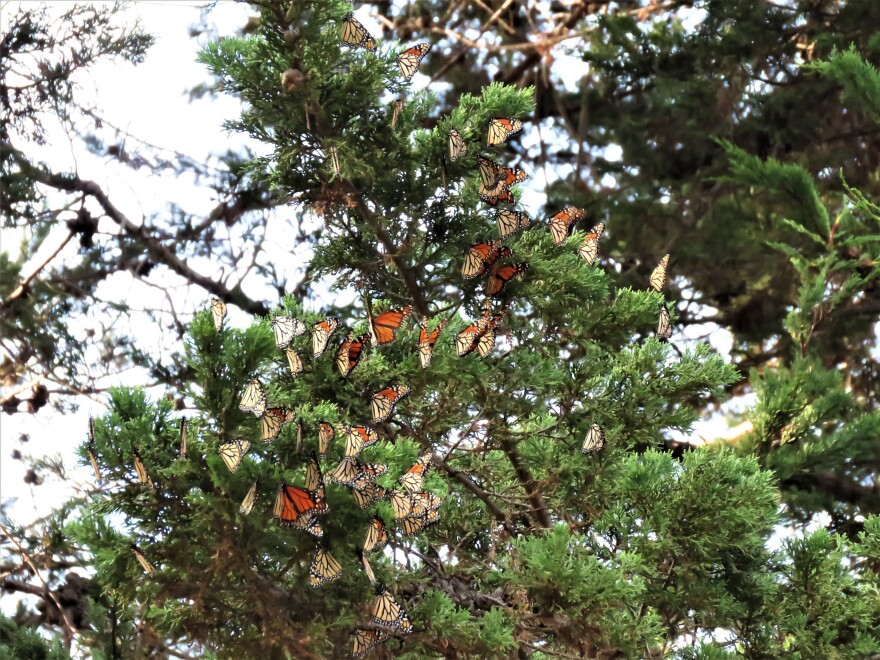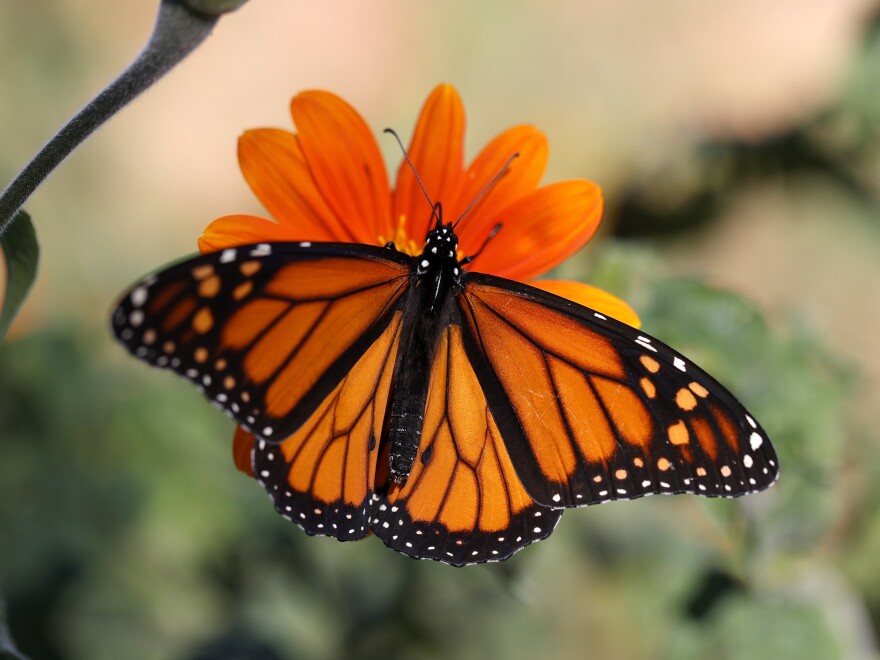Every year, monarch butterflies from all over the western U.S. migrate to coastal California, to escape the harsh winter weather. In the 1980s and '90s, more than a million made the trip each year.
Those numbers have plummeted by more than 99% in recent years.
"The last few years we've had less than 30,000 butterflies," biologist Emma Pelton said. "Last year, we actually dropped below 2,000 butterflies. So really an order of magnitude change in a short time period."
Pelton works with the Xerces Society for Invertebrate Conservation and says pesticides and habitat loss play a role in that decline.
But this year, the numbers are starting to pick up. Biologists and volunteers across California have already counted more than 100,000 monarchs.
Richard Rachman is the coordinator for the Xerces Society's annual Thanksgiving monarch count in Los Angeles County, and has been buoyed by the numbers.
"It's kind of magical to just be in this closed-in woodland, and then all of a sudden, poof! You're just like a Disneyland fairy princess surrounded by butterflies," he said.

Connie Day is a volunteer that works with Rachman, and met him at Woodlawn Cemetery in Santa Monica to conduct an early morning count last week.
They went out while it was still dark and the butterflies were quiet and not fluttering.
"It's really hard to count them when they're moving," Day said.
"You know, when you first see them, they look like the trees are dripping. And when they begin to flutter, we have people come and see them for the first time, and they gasp.
"I mean, I gasp, and I've been doing it for a long time."
Day said they had seen around 200 monarchs there in past weeks and the duo found more than 100 near the beach that morning.

The count continues until December 5, and so far this year's numbers are encouraging overall. But Pelton says it's too early to know what is causing this resurgence.
"Nature has given us a second chance ... But I do think we're in really dangerous territory," she said.
"The population has really never been so low as it has the last three years.
"I think this is really good reason to take heart that there might still be time to make a difference."
Pelton says if you live in the western U.S., you can help by planting native milkweed and flowers in your yard.
A small act that could give a big boost to the monarchs.
The audio version of this story was produced by Ashish Valentine and edited by Christopher Intagliata.
Copyright 2021 NPR. To see more, visit https://www.npr.org.









